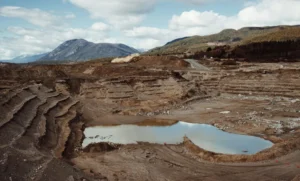Water is a renewable resource, thanks to the natural process of evaporation and precipitation.
Water is a crucial resource that touches every aspect of our lives. It is used for drinking, agriculture, industry, and maintaining ecosystems. Without water, life as we know it would cease to exist.
Given its importance, understanding whether water is a renewable resource is vital for managing this natural resource responsibly.
Renewable resources are those that can be refilled naturally over time. They include resources such as sunlight, wind, and certain types of biomass.
These resources are reusable and cannot run out. The key reason is that they are restored naturally faster than they are used up.
Is Water Renewable

Water cycle and how it contributes to water's renewability
Water is generally considered a renewable resource because of the water cycle. The water cycle is a natural process where water evaporates from surfaces, forms clouds, and returns to the earth as rainfall. This cycle ensures that water is continuously recycled and available for use.
Water as a Renewable Resource
Water is a renewable resource as it lies within a continuous cycle, as it always renews itself. However, the renewability of water depends much on several other factors, such as geographical location and human activities.
On some parts of the planet, people use it faster than it can naturally refill. Hence, there is a big concern over its long-term availability.
Water Cycle


Evaporation marks the starting point of the water cycle, in which water from oceans, rivers, and lakes gets heated up to form vapor. The vapor rises up and gathers into clouds. As the clouds cool down, the water comes back to earth in the form of rain, snow, or hail. Thus, this cycle makes water always circulating and hence renewable.
It involves continuous movement of water on, above, and beneath the Earth’s surface through evaporation, rising as water vapour in the atmosphere, condensing as cloud droplets with the aid of cooling and resulting in the dropping of the accumulated precipitation on earth, which is often in form of rain, snow, or hail.
This water then percolates down into the ground, over the surface as runoff, or may evaporate once more to continue the cycle. This cycle of continuous flow ensures that freshwater is readily available on Earth at all times.
Interesting facts about water
- 71% of the Earth’s surface is covered by water, yet only 2.5% is fresh.
- The average human body is about 60% water, which explains the importance of water to life.
- About 1.2 billion people in the world lack clean drinking water. This calls for careful management of water.
Threats to Water's Renewability
Human activities and environmental impacts
Human activities such as over-extraction, pollution, and deforestation affect the natural water cycle, thereby reducing the renewability of water.
Overuse of water sources can eventually reduce the aquifers and there can be a reduction in the river flow. The chemicals and litter can contaminate water by adding it to the waterways or rivers thus making it unavailable and harder to renew itself.
Challenges to Water's Renewability
- Overuse of water resources through agriculture and industry causes overstretch on the availability of freshwater.
- Other issues include industrial waste pollution, agricultural runoff, and household chemicals, which contaminate water sources.
- Climate change is changing weather patterns, thus disturbing the water cycle and the renewability of water.
The Bottom Line
Water is generally considered a renewable resource due to the natural water cycle that refills it. However, human activities and environmental changes pose serious challenges to its renewability.
Proper management, sustainable use practices, and conservation efforts are necessary to ensure that water remains a sustainable resource for the future.
FAQ's
Why is fresh water non-renewable?
Freshwater is not considered non-renewable. It is a renewable resource, replenished through the natural water cycle. However, its availability can be limited.
Is water an example of renewable or nonrenewable?
Water is a renewable resource constantly replenished by the water cycle.
Is water a source of renewable energy?
Water is a renewable energy source utilized in hydropower and other forms of energy generation.




